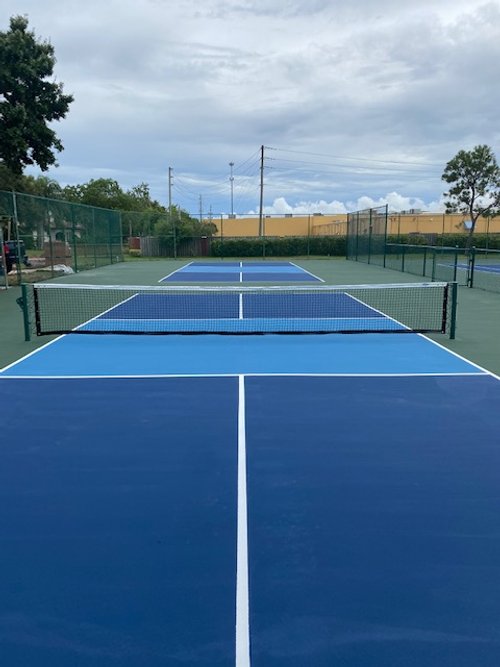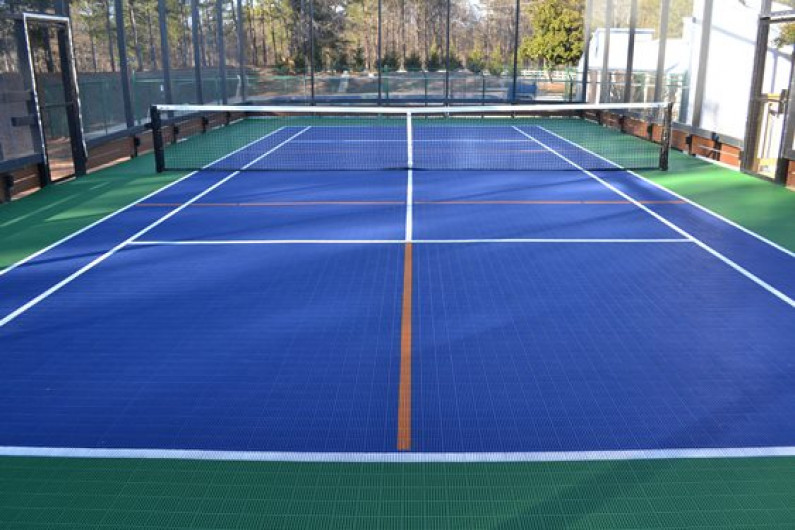Lasting Practices in Pickleball Court Building And Construction You Must Know
As the popularity of pickleball remains to rise, so as well does the demand for sustainable methods in court construction. This approach not just addresses environmental issues but also boosts the long life and functionality of the courts. From picking environmentally friendly products to carrying out effective drainage and energy-saving lights services, there are numerous approaches to consider. The influence of these practices expands much past the court itself. Understanding exactly how each component contributes to an extra sustainable future welcomes even more exploration into the detailed equilibrium between leisure growth and ecological stewardship.
Choosing Eco-Friendly Materials
Selecting environmentally friendly materials is a critical action in the construction of sustainable pickleball courts. The selection of sustainable materials not only lessens ecological influence yet also enhances the durability and performance of the court. Key materials consist of recycled rubber for the surface area, which uses excellent toughness and shock absorption while drawing away waste from garbage dumps.
In addition, using locally sourced materials lowers transportation discharges and sustains local economic climates. Pickleball court construction. Using native woods for fence and seating can give a lasting visual while making certain strength versus the aspects.
Incorporating permeable products for court foundations can better add to sustainability by enabling all-natural water drain and reducing drainage. These options not only shield regional environments however likewise promote healthier play environments.
Effective Water Drainage Solutions
While the option of environment-friendly materials is crucial, applying efficient water drainage options is just as essential for keeping lasting pickleball courts. Proper drain not only safeguards the court surface area from water damages however likewise minimizes erosion and overflow, advertising ecological stability.
Effective drain systems can consist of absorptive paving, which allows water to penetrate the ground rather than merging externally. This decreases the possibility of standing water, which can cause mold and mildew and various other upkeep concerns. Furthermore, including strategically placed drainage networks and swales can route excess water far from the court location, making sure a dry playing surface and preventing dirt disintegration.
Using native vegetation in the landscaping around the courts can additionally enhance water drainage by soaking up excess water and decreasing overflow. These plants call for much less watering and promote biodiversity, aligning with lasting practices.
Moreover, it is critical to routinely maintain the drain system to ensure its lasting effectiveness. This consists of clearing debris and monitoring for blockages. By focusing on efficient water drainage services, pickleball court constructors can substantially add to the sustainability and durability of the center, ultimately profiting both gamers and the environment.
Energy-Efficient Illumination Options
As the need for pickleball continues to grow, incorporating energy-efficient illumination choices right into court design has actually come to be increasingly vital for sustainability. Conventional lights systems usually consume extreme power, adding to greater operational costs and ecological impact. Embracing modern, energy-efficient innovations is necessary for both brand-new building and constructions and improvements.
LED (Light Emitting Diode) lights attracts attention as a top selection as a result of its long life and energy cost savings (Pickleball court construction). Compared to traditional lighting, LEDs make use of around 75% less power and can last as much as 25 times longer, significantly lowering maintenance costs. Furthermore, the directional nature of LED lights lessens light pollution, making certain that illumination is concentrated on the court rather than bordering areas.

Sustainable Surface Area Alternatives
Exploring sustainable surface area choices for pickleball courts has acquired traction amongst builders and players alike. The focus on eco-friendly materials not only straightens with the expanding environmental understanding but likewise enhances the efficiency and durability of the courts.
This product offers superb shock absorption, minimizing the danger of injuries for players while advertising sustainability. These ceramic tiles are easy to change and set up, and their flexibility permits for different court configurations.
Natural lawn courts are also becoming a lasting choice, advertising biodiversity and reducing the warm island result. They call for routine maintenance and water, which may not straighten with all sustainability objectives.

Water Conservation Techniques

One more effective technique includes the installation of rainwater harvesting systems. These systems accumulate and keep rainwater for use in preserving court surface areas and landscaping. This strategy not just preserves potable water yet likewise lowers reliance on local resources.
Furthermore, using drought-resistant landscape design around the courts is important. Indigenous plants call for less water and are much better adapted to local climate conditions, hence decreasing overall water usage. Furthermore, using reliable watering systems, such as drip watering, makes certain that water is delivered directly to plant origins, lessening dissipation and waste.
Verdict
Incorporating sustainable techniques in pickleball court construction considerably contributes to environmental preservation and resource efficiency. By focusing on these methods, the construction of pickleball courts can align with wider ecological objectives while advertising longevity and capability within areas.
As the popularity of pickleball proceeds to rise, so also does the requirement for this page sustainable practices in court building and construction.Selecting environment-friendly products is a critical step in the building of sustainable pickleball courts. By focusing on energy-efficient illumination choices, pickleball court erectors can contribute to a much more sustainable future while satisfying the requirements of players and stakeholders alike.Including lasting surface alternatives not only enhances the efficiency of pickleball courts however additionally leads the method for executing effective water conservation strategies.Including sustainable techniques in pickleball court building dramatically adds to environmental conservation and resource effectiveness.